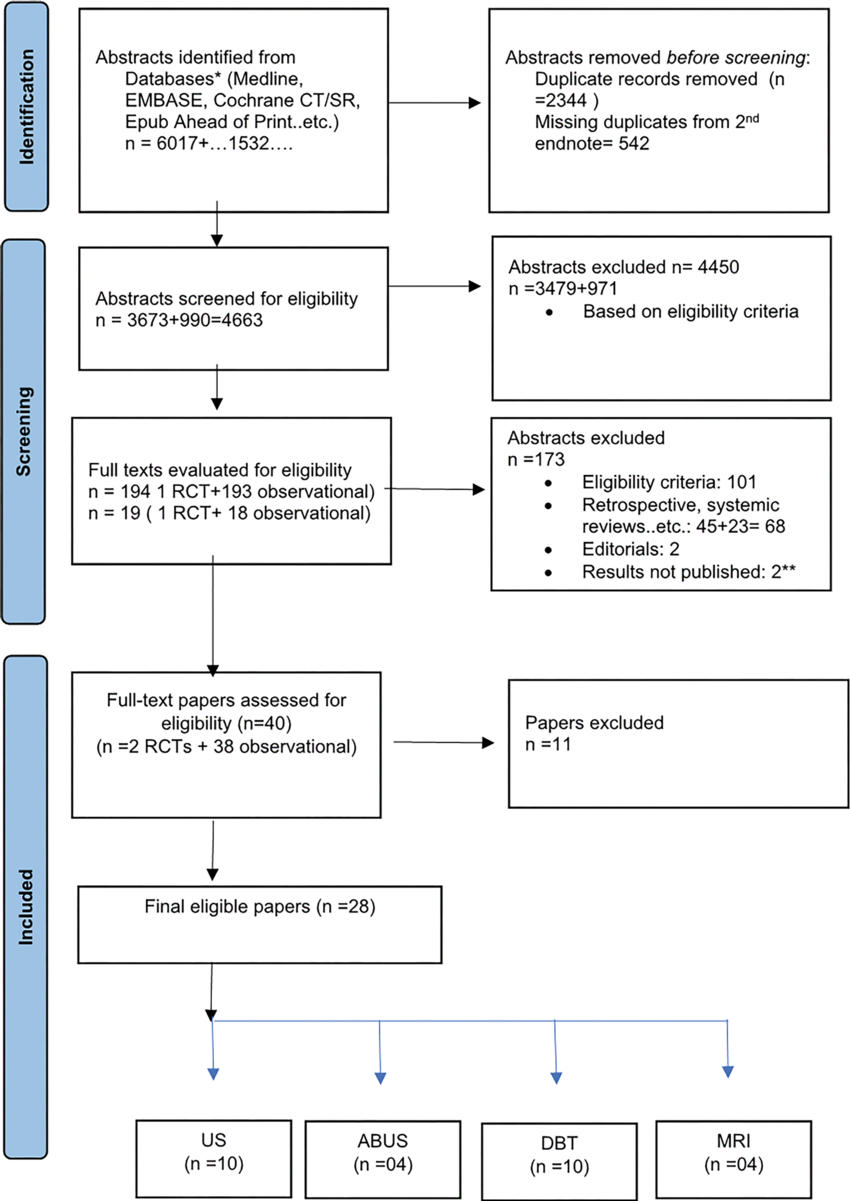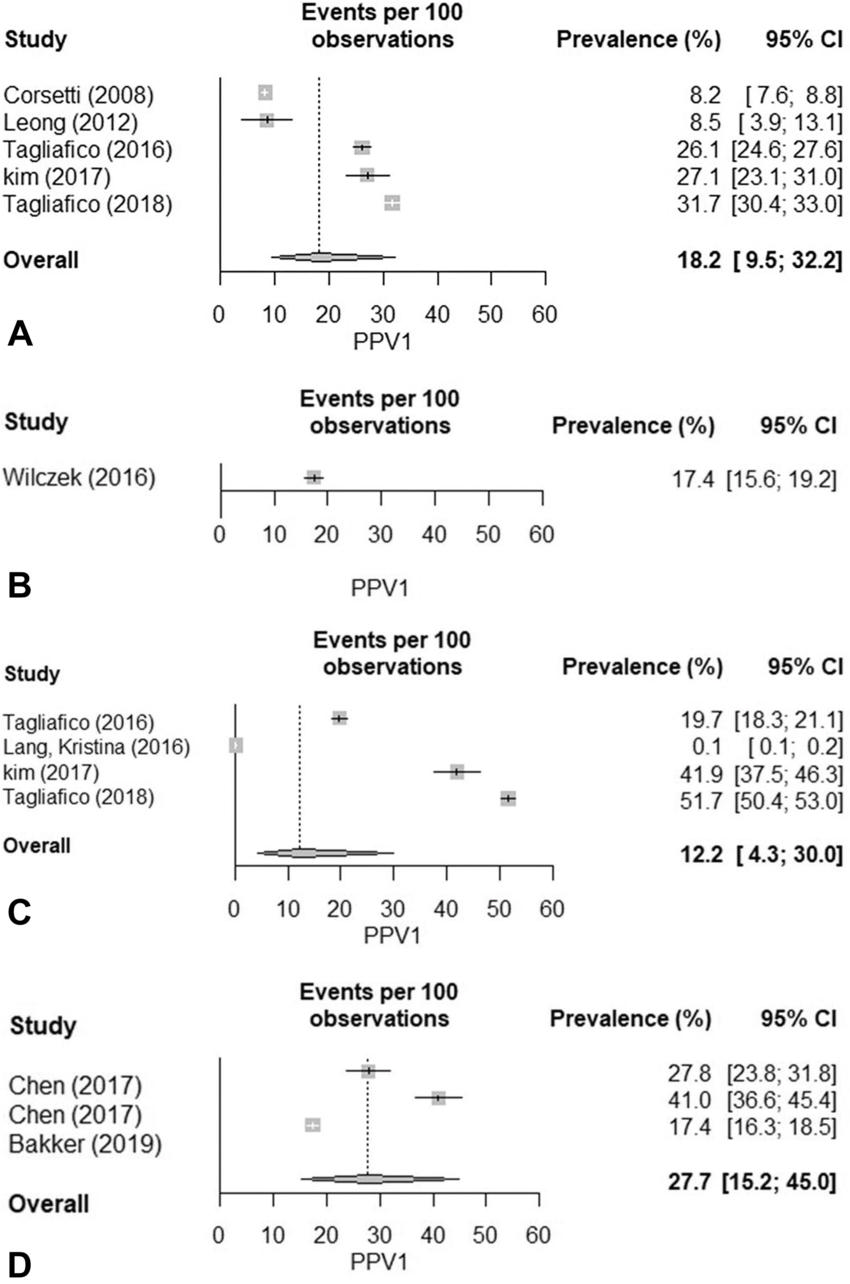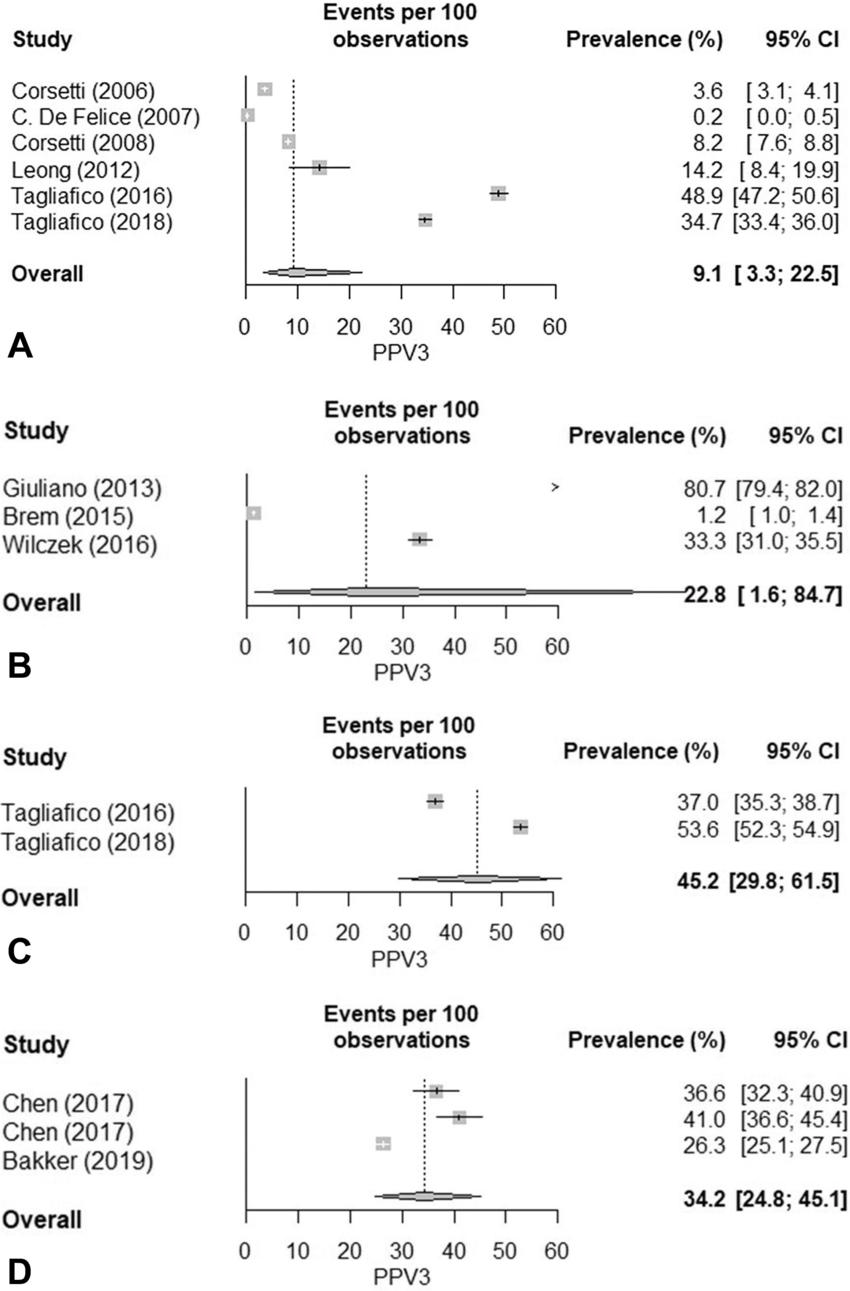Breast MRI Effective at Detecting Cancer in Dense Breasts
Released: January 31, 2023
At A Glance
- Breast MRI was superior at detecting breast cancer in women with dense breasts.
- Researchers conducted a meta-analysis of 22 studies, which included 132,166 patients with dense breasts and a negative mammogram.
- MRI was capable of detecting even the smallest of cancers.
- RSNA Media Relations
1-630-590-7762
media@rsna.org - Linda Brooks
1-630-590-7738
lbrooks@rsna.org - Imani Harris
1-630-481-1009
iharris@rsna.org
OAK BROOK, Ill. — Compared to other common supplemental screening methods, breast MRI was superior at detecting breast cancer in women with dense breasts, according to a study published in Radiology, a journal of the Radiological Society of North America (RSNA).
Breast cancer is one of the leading causes of cancer death in women. Roughly 47% of women in the United States have dense breasts, which is an independent risk factor of breast cancer. Women with dense breasts have a higher amount of glandular tissue and fibrous connective tissue and low amounts of fatty tissue in the breasts.
While screening mammography effectively detects up to 98% of cancer in fatty breasts, breast cancer is more easily missed in dense breasts. This results in a negative mammogram, giving patients false reassurance.
“Breast cancer masses appear white on a mammogram, and dense tissue also appears white, which makes finding breast cancers within dense breast tissue harder for radiologists,” said study co-author Vivianne Freitas, M.D., M.Sc., assistant professor at the University of Toronto, Canada, and staff radiologist at the Joint Department of Medical Imaging in Toronto.
Supplemental screening may be required to assist in cancer detection in women with dense breasts. The four most common supplemental imaging tests are hand-held breast ultrasound, automated breast ultrasound, digital breast tomosynthesis and breast MRI.
“Our study was designed to evaluate the role of different supplementary screening tests in women of average or intermediate risk of breast cancer with dense breast tissue who had a negative screening mammogram,” Dr. Freitas said.
To measure which screening method was the most beneficial to women with dense breasts, researchers conducted a meta-analysis on 22 studies that included 261,233 patients screened for breast cancer. Ten of the studies covered hand-held breast ultrasound, four studies covered automated breast ultrasound, three studies covered breast MRI, and eight studies reported on digital breast tomosynthesis. Of the patients included, 132,166 patients had dense breasts and a negative mammogram.
Risk assessment models have been used to identify patients with an average and intermediate risk of developing breast cancer. In the United States, women with an estimated lifetime risk of 12 to 13% of developing breast cancer are considered average risk. Factors that elevate the risk to intermediate include having a history of treated breast cancer or previous breast biopsies with high-risk lesions. High-risk patients, with a lifetime risk of 20% or higher, were excluded from the study since the benefit of breast MRI is already established in high-risk populations.
Meta-analysis showed that of the 132,166 patients with dense breasts, a total of 541 breast cancers that were initially missed on mammography were detected with supplemental screening methods. Breast MRI was the superior screening method and was capable of detecting even the smallest of cancers. Excluding MRI, there was not a significant difference between the other supplemental screening methods.
“MRI is far superior in terms of cancer detection compared to hand-held ultrasound, automated ultrasound and digital breast tomosynthesis,” Dr. Freitas said. “Our results about the role of MRI in supplementary screening will allow stakeholders to guide healthcare policies in this setting and direct further research.”
While the results demonstrate the effectiveness of breast MRI in cancer detection, more research is needed.
“Before we can advocate for wider application of breast MRI in these women, further evaluation of cost-effectiveness of breast MRI compared to other techniques, effect on mortality reduction, etc., will need to be studied,” Dr. Freitas said. “At the current time, availability and cost of the breast MRI remain the biggest barrier for widespread implementation.”
“Supplemental Breast Cancer Screening in Women with Dense Breasts and Negative Mammography: A Systematic Review and Meta-Analysis.” Collaborating with Dr. Freitas were Heba Hussein, M.D., Ph.D., Engy Abbas, M.D., Sareh Keshavarsi, Ph.D., Rouhi Fazelzad, M.D., Karina Bukhanov, M.D., Supriya Kulkarni, M.D., Frederick Au, M.D., Sandeep Ghai, M.D., and Abdullah Alabousi, M.D.
In 2023, Radiology is celebrating its 100th anniversary with 12 centennial issues, highlighting Radiology’s legacy of publishing exceptional and practical science to improve patient care.
Radiology is edited by Linda Moy, M.D., New York University, New York, N.Y., and owned and published by the Radiological Society of North America, Inc. (https://pubs.rsna.org/journal/radiology)
RSNA is an association of radiologists, radiation oncologists, medical physicists and related scientists promoting excellence in patient care and health care delivery through education, research, and technologic innovation. The Society is based in Oak Brook, Illinois. (RSNA.org)
For patient-friendly information on breast MRI, visit RadiologyInfo.org.
Images (JPG, TIF):

Figure 1. Preferred Reporting Items for Systematic Reviews and Meta-Analyses (PRISMA) checklist. ABUS = automated whole-breast US, DBT = digital breast tomosynthesis, RCT = randomized controlled trial.
High-res (TIF) version
(Right-click and Save As)

Figure 2. Forest plots show the incremental cancer detection rate (CDR) per 1000 screenings per modality. (A) Studies with handheld US. (B) Studies with automated whole-breast US. (C) Studies with digital breast tomosynthesis. (D) Studies with MRI.
High-res (TIF) version
(Right-click and Save As)

Figure 3. Forest plots show invasive cancer detection rate per 1000 screenings per modality. (A) Studies with handheld US. (B) Studies with automated whole-breast US. (C) Studies with digital breast tomosynthesis. (D) Studies with MRI.
High-res (TIF) version
(Right-click and Save As)

Figure 4. Forest plots show positive predictive value of recall (PPV1) per modality. (A) Studies with handheld US. (B) Studies with automated whole-breast US. (C) Studies with digital breast tomosynthesis. (D) Studies with MRI.
High-res (TIF) version
(Right-click and Save As)

Figure 5. Forest plots show positive predictive value of biopsies performed (PPV3) per modality. (A) Studies with handheld US. (B) Studies with automated whole-breast US. (C) Studies with digital breast tomosynthesis. (D) Studies with MRI.
High-res (TIF) version
(Right-click and Save As)
